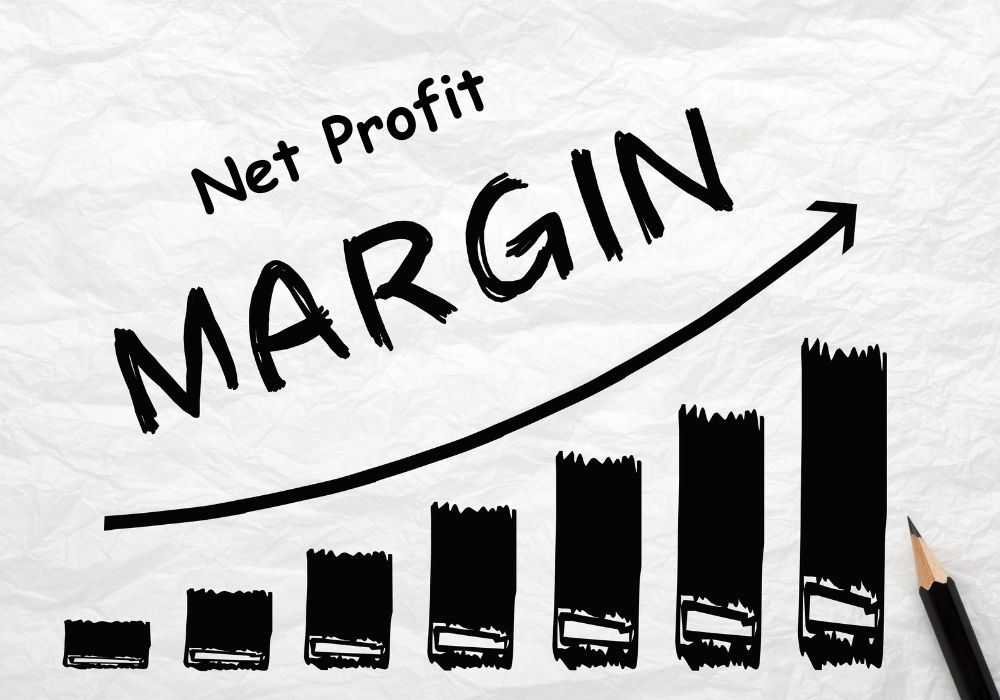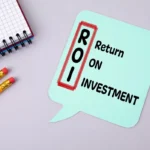- What Is Gross Profit Percentage?
- Gross Profit Percentage Formula
- How to Calculate Gross Profit Percentage?
- Why Gross Profit Percentage Matters?
- Real-World Application
- Factors Affecting GPP
- How To Improve GPP?
- Things to Avoid
- Digging Deeper
- Real-Life Scenarios
- FAQs
- What’s a solid gross profit percentage?
- How often should it be calculated?
- Can it go negative?
- How’s it different from net profit percentage?
- Wrapping It Up
Running a business, managing a team, or eyeing an investment? Knowing a company’s financial health is key. One metric stands out: gross profit percentage.
It’s like a window into how well a business turns sales into profit. Curious? This guide breaks it down—what it is, why it matters, and how to calculate it. By the end, this metric will feel like an old friend.
What Is Gross Profit Percentage?
Think of gross profit percentage as a business’s report card for profitability. It shows what’s left of revenue after subtracting the cost of goods sold (COGS).
It’s expressed as a percentage and shows how much of each dollar earned from sales contributes to covering operating expenses, taxes, and net profit.
A higher gross profit percentage indicates better efficiency in producing or selling goods, while a lower percentage might signal high production costs or pricing issues.
This metric is particularly useful for comparing profitability across businesses in the same industry.
For instance, a retail clothing store and a tech gadget shop may have different revenue streams, but their gp percentages can reveal which one manages costs more effectively relative to sales.
Gross Profit Percentage Formula
Calculating gross profit percentage is like following a recipe. The formula is straightforward:
Gross Profit Percentage = (Gross Profit ÷ Revenue) × 100
Here’s what goes into it:
- Revenue: Total cash from sales, like money from selling handmade candles.
- Cost of Goods Sold (COGS): Direct costs tied to production—think wax and wicks, not rent or ads.
- Gross Profit: Revenue minus COGS. Simple subtraction.
Multiply by 100, and you’re done—a percentage that’s easy to grasp.
How to Calculate Gross Profit Percentage?
Let’s make it real with an example. Imagine you operate a small business selling custom phone cases. Here’s how to figure out its GP percentage:
- Find Revenue. Selling 1,000 cases at $20 each? That’s $20,000 in total sales.
- Calculate Cost of Goods Sold (COGS). Each case costs $5 for materials and $3 for labor. So, $8 per case. For 1,000 cases? $8,000.
- Get Gross Profit. Subtract COGS from revenue: $20,000 – $8,000 = $12,000.
- Apply the Formula. Divide gross profit by revenue, then multiply by 100: ($12,000 ÷ $20,000) × 100 = 60%.
The result? This business keeps 60 cents of every dollar after covering production costs. Not bad, right?
Why Gross Profit Percentage Matters?
Before diving into the math, it’s worth understanding why this metric is so important. GP percentage serves as a quick snapshot of a business’s ability to generate profit from its products or services.
It helps stakeholders—whether owners, managers, or investors—assess pricing strategies, cost management, and overall operational efficiency. Here are a few reasons it’s a go-to metric:
- Pricing Decisions. A low GP percentage might indicate prices need a tweak or costs are too high.
- Cost Control. Tracking this percentage over time can highlight rising costs, such as raw materials or labor, before they erode profitability.
- Industry Benchmarking. Stacking GP percentages against competitors helps gauge whether a business is keeping pace or falling behind.
- Investor Appeal. Investors often look at gross profit percentage to evaluate whether a business can scale efficiently or sustain profitability.
Ready to crunch the numbers? Let’s break down the formula.
Real-World Application
Now, imagine you’ve a company selling eco-friendly water bottles. It pulls in $50,000 in revenue over a quarter. The COGS—materials and labor—totals $30,000. Here’s the math:
- Gross Profit: $50,000 – $30,000 = $20,000.
- Gross Profit Percentage: ($20,000 ÷ $50,000) × 100 = 40%.
What does this mean? Forty percent of revenue is left to cover other costs, like utilities or marketing. If competitors average 50%, it’s time to rethink costs or pricing. Maybe negotiate better deals with suppliers or nudge prices up slightly.
Factors Affecting GPP
Lots of factors can affect a business’s gross profit percentage. Understanding them is like knowing the weather before a hike—it helps plan the path. Here’s what to know:
- Pricing Strategy. If prices are too low, the GP percentage shrinks, even if sales volume is high. On the contrary, premium pricing can boost the percentage, but may reduce sales if customers find it too expensive.
- Cost Fluctuations: Rising costs for raw materials or labor directly increase COGS, lowering the gross profit percentage unless revenue rises to compensate.
- Product Mix: Selling a mix of high-margin and low-margin products can affect the overall percentage. For example, a store selling both luxury and budget items may see fluctuations based on which products sell more.
- Economies of Scale: Larger businesses often negotiate better deals with suppliers, reducing COGS and improving gross profit percentage.
Keeping an eye on these keeps profitability on track.
How To Improve GPP?
Want a higher gross profit percentage? It’s not rocket science—just smart tweaks. Here are some practical moves:
- Optimize Pricing: Analyze market trends and customer willingness to pay. A slight price increase, if justified by value, can significantly boost margins.
- Negotiate with Suppliers: Securing discounts on raw materials or bulk purchases reduces COGS.
- Streamline Production: Invest in efficient processes or technology to lower labor or manufacturing costs.
- Focus on High-Margin Products: Shift marketing efforts toward products with better margins to improve the overall percentage.
Experimenting with these strategies while tracking the gross profit percentage helps identify what works best for a specific business.
Things to Avoid
Calculating gross profit percentage seems easy, but mistakes can trip things up. Here’s what to avoid:
- Including Indirect Costs in COGS: Only direct costs like materials and labor belong in COGS. Rent, utilities, or marketing expenses are operating costs and should not be included.
- Ignoring Seasonal Variations: Sales and costs can fluctuate seasonally, so comparing percentages across different periods requires context.
- Overlooking Discounts or Returns: Revenue should reflect net sales (after discounts and returns) to ensure accuracy.
- Focusing Solely on Gross Profit Percentage. This metric is key, but it’s not the whole story. Operating costs and taxes matter too.
By avoiding these errors, businesses can rely on accurate calculations to guide decision-making.
Digging Deeper
Gross profit percentage isn’t just a number—it’s a tool for smarter decisions. It’s like a compass for navigating business choices.
A strong percentage means there’s room to cover other costs and still pocket profit. A weak one? It’s a nudge to rethink strategy.
For example, a furniture maker with a 25% margin might realize competitors hit 40% by sourcing cheaper wood or streamlining designs. That insight sparks change.
Plus, it’s a universal language. Investors love it because it shows if a business can scale without costs spiraling.
Managers use it to spot inefficiencies, like when labor costs creep up. Even small tweaks—like switching to a cheaper supplier—can make a big difference over time.
Real-Life Scenarios
Let’s paint another picture. Imagine you run a company that makes artisanal candles. Revenue is $100,000 for the quarter, with COGS (wax, wicks, and labor) at $55,000. Now let’s do the math:
- Gross Profit: $100,000 – $55,000 = $45,000.
- Gross Profit Percentage: ($45,000 ÷ $100,000) × 100 = 45%.
This 45% means nearly half the revenue stays after production costs. If the industry average is 60%, it’s time to dig in.
Maybe the wax supplier raised prices, or labor is less efficient than competitors. Small changes, like bulk-buying wax, could nudge that percentage up.
Now, consider a tech startup selling subscription software. Revenue is $200,000, with COGS (mostly server costs) at $20,000. The math:
- Gross Profit: $200,000 – $20,000 = $180,000.
- Gross Profit Percentage: ($180,000 ÷ $200,000) × 100 = 90%.
That 90% is stellar—typical for software with low direct costs. But if server costs double, the percentage drops, signaling a need to optimize tech or raise prices.
FAQs
Still got questions? Here are answers to some common questions regarding GP percentage:
What’s a solid gross profit percentage?
It depends on the industry. Software businesses often hit 70% or more due to low COGS. Retail? Think 30–50%. You can check industry benchmarks for clarity.
How often should it be calculated?
Monthly or quarterly works for most. High-volume businesses might check weekly; smaller ones, maybe yearly.
Can it go negative?
Yep, if COGS outstrips revenue. That’s a red flag—costs are too high or prices too low. Action needed pronto.
How’s it different from net profit percentage?
Gross profit percentage looks only at revenue and COGS. Net profit percentage factors in all expenses, like rent, taxes, and marketing.
Wrapping It Up
Gross profit percentage is a must-know for anyone steering a business or eyeing investments. It’s a clear, no-nonsense way to measure how well sales cover production costs.
The best part? It’s simple to calculate and packed with insights. Whether running a candle shop, a tech startup, or a furniture business, this metric shines a light on what’s working—and what needs work.
By keeping tabs on pricing, costs, and product mix, businesses can nudge that percentage higher. Avoid common mistakes, compare to industry standards, and use it alongside other metrics for a full financial picture.







